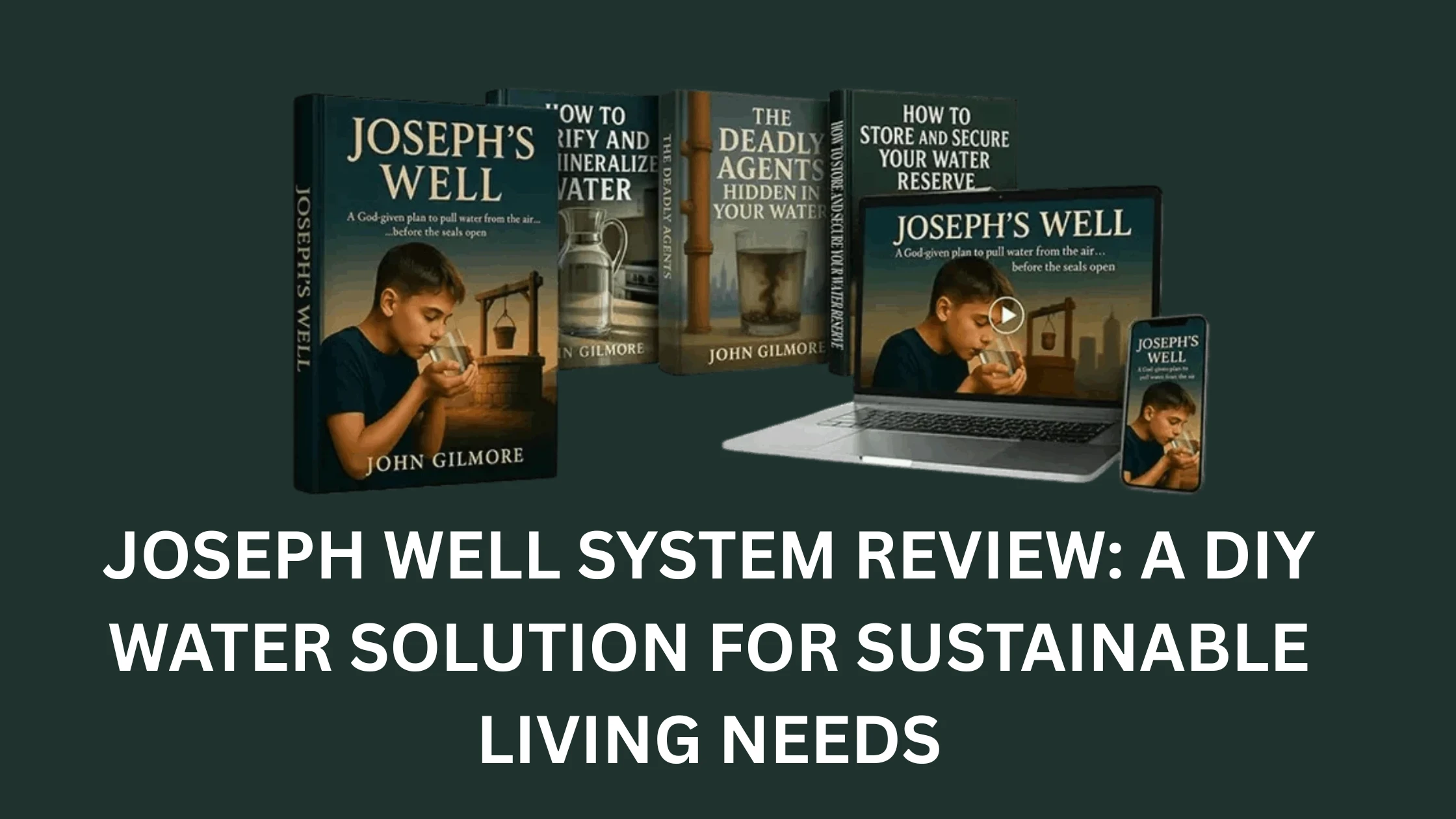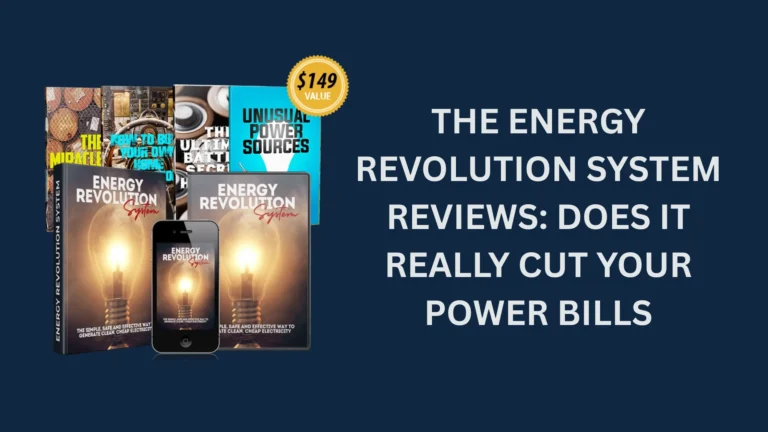Joseph Well System Review: A DIY Water Solution for Sustainable Living Needs
Sustainable living isn’t just a trend anymore—it’s becoming a necessity. From climate change to rising utility costs, more people are looking for practical ways to reduce their environmental footprint and take control of essential resources like food, energy, and water. But while solar panels and home gardens are becoming common, clean water access is still often left out of the conversation.
That’s where the Joseph Well System steps in. This DIY water generation guide has been gaining attention as an affordable, off-grid water solution—especially for those who want to live more independently, reduce waste, and prepare for future uncertainties. In this article, I’ll walk you through how it works, why it’s valuable for sustainable living, and what to keep in mind before diving in.

💧 The Sustainability Problem We Often Overlook: Water
Most people focus on saving electricity or cutting down on plastic waste—but clean water access is just as critical. Here’s why:
- 💸 Water costs are rising in many areas due to aging infrastructure and drought.
- 🔌 Municipal water systems rely on power grids and are vulnerable to outages.
- 🌍 Bottled water solutions contribute massively to plastic pollution and carbon emissions.
- 🌧️ Rainwater harvesting only works when it rains—and filtration still adds cost.
That means even people living sustainably still often rely on water systems that are fragile, expensive, or environmentally damaging. The Joseph Well Water System offers a smarter alternative—by generating water directly from the air.
🛠️ What Is the Joseph Well System?
The Joseph Well System isn’t a device you buy. It’s a step-by-step digital guide (with blueprints and videos) that teaches you how to build your own atmospheric water generator (AWG) using affordable, local materials.
How It Works:
- Draws air using a fan.
- Condenses moisture by cooling the air (just like water droplets on a cold glass).
- Collects the droplets in a clean tank.
- Filters and purifies the water using a multi-stage process.
- Optional mineralization for improved water quality.
- Powered by electricity or off-grid solar setup for full independence.
The entire system can be built for under $150 using common tools, and the guide itself costs $39 (one-time).
🌿 Why It Matters for Sustainable Living
Living sustainably isn’t just about using reusable bags or recycling—it’s about reducing dependency on fragile, resource-heavy systems and taking steps to meet your own basic needs with minimal impact on the environment. Water, being one of the most essential resources, often gets overlooked in sustainability discussions.
The Joseph Well System changes that. It brings water production directly into your hands, in a way that’s affordable, renewable, and scalable. Let’s break down why this matters so much in the context of sustainable living.
✅ 1. Water Without Draining the Earth
Most traditional water systems—whether municipal or private wells—rely on groundwater extraction or overburdened treatment facilities. That means we’re either pulling from underground aquifers (which take centuries to refill), or depending on water lines that are powered, treated, and transported using fossil fuels.
The Joseph Well System uses humidity in the air—a renewable, ever-present source. You’re not taking from rivers, lakes, or groundwater. You’re simply condensing what’s already around us, without affecting natural water cycles. That’s a major win for environmental conservation.
✅ 2. No More Bottled Water Waste
We’ve all heard about the plastic problem. Billions of plastic bottles end up in landfills and oceans every year. Even if you recycle, only a small fraction of plastics are actually reused.
By building your own water generator, you cut plastic waste to zero. No bottles to buy, store, or toss. And you save money in the long run—no more buying packs of water every week. For families or individuals trying to lower their waste output, this system is an ideal fit.
✅ 3. Renewable Energy Integration
Another reason the Joseph Well System fits perfectly into a sustainable lifestyle is its off-grid power flexibility. You can connect it to a small solar panel and car battery setup, and generate water completely independently of the electric grid.
This means:
- Lower energy usage
- No fossil fuel reliance
- Water and power in one sustainable system
If you’re already using solar energy in your home or off-grid setup, the Joseph Well System slides right in without requiring any complicated upgrades.
✅ 4. Minimal Footprint, Maximum Value
The system itself is compact. There’s no drilling, no concrete infrastructure, and no water lines to run. It can be built using locally available materials, reducing the environmental impact of manufacturing and shipping pre-built systems.
Once it’s up and running, maintenance is minimal. No complicated electronics, no regular technician visits. Just basic upkeep and occasional filter replacement, which can also be sourced affordably and sustainably.
✅ 5. Self-Reliance is Sustainable, Too
Living sustainably isn’t just about protecting the planet—it’s also about protecting yourself and your family from uncertain times.
Droughts, storms, and infrastructure failures can disrupt water supply in even the most advanced cities. The Joseph Well System gives you a reliable backup water source, which is crucial when sustainability intersects with survival.
Whether you’re homesteading, downsizing to a tiny home, living off-grid, or just preparing for future disruptions, this DIY system puts sustainable resilience into your hands.
In short, the Joseph Well System doesn’t just provide water—it offers a real, actionable solution to one of the most important yet overlooked aspects of sustainable living.
Ready to build your own water system?
👉 Get the Joseph Well System Blueprint Here
🔍 Is It Reliable? What You Should Know
While the system is based on proven science, it’s not magic. Here are the practical points:
- Humidity is key – More moisture in the air = more water production. It still works in low humidity, but yield will vary.
- It’s DIY – You’ll need to follow instructions and spend a few hours building. Basic tools required.
- Water quality is excellent – As long as filters are maintained, the water is safe for drinking, cooking, and daily use.
- Maintenance is minimal – Occasional cleaning and filter checks are enough. No complicated parts to replace.
For sustainable-minded individuals, this is not a drawback—it’s a benefit. You’re learning a system, not buying a product. You’re building independence, not buying convenience.
💼 Who’s Using the Joseph Well System?
This system is now popular among:
- 🏡 Eco-homeowners looking to disconnect from the grid
- 🌳 Tiny house builders and van lifers who need water off-grid
- 🌍 Environmentalists aiming to reduce their plastic and water waste
- 🚨 Preppers and survivalists securing water during emergencies
- 🛠️ DIY lovers who enjoy useful weekend projects with real-life value
The Joseph Well System meets the needs of people who care about self-reliance, sustainability, and cost-effective innovation.
Sustainable water is possible—start with your own system today.
👉 Access the DIY Guide to the Joseph Well System
🔚 Final Thoughts: A Small Step Toward Big Change
In a world full of expensive water generators, single-use plastics, and fragile infrastructure, the Joseph Well System offers a refreshing perspective. It gives power back to the individual—through knowledge, action, and simplicity.
It doesn’t require a huge investment or advanced skills. Just the willingness to learn and the desire to live smarter.
If you’re serious about sustainable living, this system might be the most practical, affordable, and empowering step you take this year.






